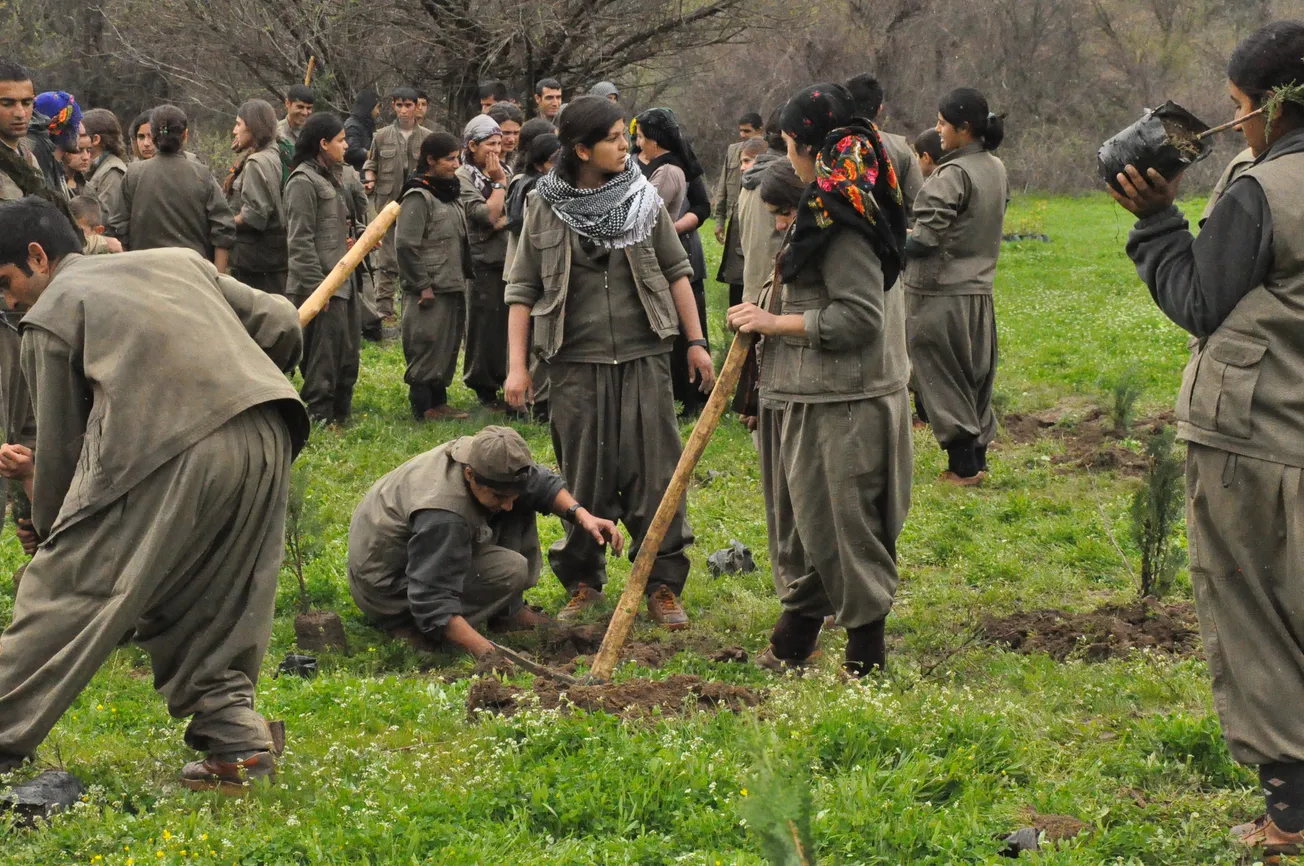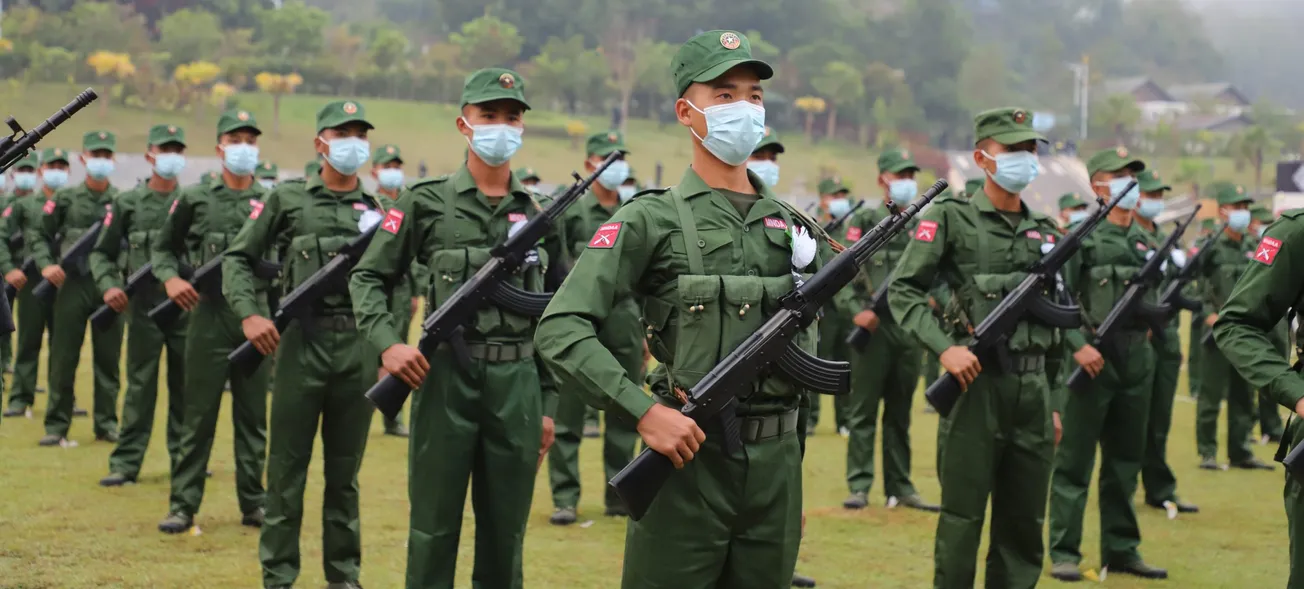Overview
The New People's Army (NPA) is the armed wing of the Communist Party of the Philippines (CPP), established on March 29, 1969, with the aim of overthrowing the Philippine government through protracted guerrilla warfare. As a Maoist-inspired organization, the NPA seeks to establish a communist state in the Philippines and expel foreign influence, particularly that of the United States. The group has been a significant destabilizing force in the country for over five decades, engaging in armed conflict with government forces, conducting attacks on civilian targets, and maintaining a presence in rural areas across the Philippine archipelago.
As of early 2025, the NPA is estimated to have around 1,100 members, though this number has fluctuated over the years. The group operates primarily in rural areas of Luzon, Visayas, and parts of Mindanao, with cells also present in Manila and other metropolitan centers. The NPA's persistence and adaptability have made it one of the longest-running communist insurgencies in the world, posing ongoing security challenges for successive Philippine administrations.
History
- Formation and Early Years (1969-1972): The NPA was founded on March 29, 1969, by Jose Maria Sison and Bernabe Buscayno, emerging from the merger of the newly established CPP and remnants of the Hukbalahap movement. Initially comprising only 60 armed fighters and 35 rifles, the group quickly expanded its operations and support base. By 1970, the NPA had grown to several thousand soldiers and relocated most of its bases to Quezon and Isabela provinces.
- Martial Law and Expansion (1972-1986): President Ferdinand Marcos's 1972 declaration of martial law initially dealt heavy losses to the NPA. However, the group adapted by forming small, self-supporting guerrilla units across the islands. This period saw the NPA gain popularity among peasants by assisting in land reform conflicts and disputes against landlords. By 1983, the NPA claimed control of approximately 20% of Philippine villages and support from about 180,000 citizens.
- Peak and Internal Challenges (1986-2000): The late 1980s marked the peak of the NPA's strength, with an estimated 25,000 fighters. However, the group faced internal challenges, including ideological disputes and deadly purges against suspected military infiltrators. This period also saw increased military pressure from the government and a split within the movement between "reaffirmists" (RAs) and "rejectionists" (RJs).
- Decline and Adaptation (2000-2025): The 21st century has seen a gradual decline in the NPA's numbers and influence, partly due to sustained military operations and changing socio-economic conditions. However, the group has demonstrated resilience and adaptability. As of 2025, the NPA continues to operate across the Philippines, with an estimated 1,100 members. The group has expanded its tactics to include urban terrorism and has increased its use of improvised explosive devices (IEDs).
Key Characteristics
- Ideology: The NPA adheres to a Maoist interpretation of communism, emphasizing protracted people's war and the central role of the peasantry in the revolution.
- Rural Focus: While maintaining an urban presence, the NPA primarily operates in rural areas, seeking to build support among peasant communities.
- Anti-Imperialism: The group strongly opposes what it perceives as U.S. imperialism and seeks to expel foreign influence from the Philippines.
- Decentralized Structure: The NPA operates with a decentralized organizational structure, allowing for autonomy among its various fronts.
- Economic Activities: The group engages in various economic activities to fund its operations, including "revolutionary taxes," extortion, and involvement in local economies.
- Use of Violence: The NPA is known for its use of violence against both military and civilian targets, including assassinations, bombings, and attacks on infrastructure.
Key People/Actors
- Jose Maria Sison: Founder and long-time leader of the CPP-NPA. As of 2025, Sison continues to play a significant role in the movement from his exile in the Netherlands.
- Bernabe Buscayno (Commander Dante): Co-founder of the NPA, later left the movement and participated in peace efforts.
Key Capabilities and Tactics
- Guerrilla Warfare: The NPA excels in hit-and-run tactics and ambushes, leveraging their familiarity with difficult terrain in rural areas.
- Improvised Explosive Devices (IEDs): The group has demonstrated increasing proficiency in manufacturing and deploying IEDs.
- Extortion and "Revolutionary Taxes": The NPA generates funds through extortion of local businesses and politicians, often under the guise of revolutionary taxes.
- Assassinations and Targeted Killings: The group has a history of conducting assassinations of government officials, military personnel, and perceived enemies.
- Propaganda and Recruitment: The NPA employs sophisticated propaganda techniques and leverages local grievances to recruit new members, particularly among youth and in rural areas.
- Urban Operations: While primarily rural-based, the NPA maintains urban units capable of conducting operations in cities.
- Adaptability: The NPA has shown a remarkable ability to adapt its tactics and structure in response to changing circumstances and government counter-insurgency efforts.
Outlook
As of early 2025, the outlook for the NPA and its conflict with the Philippine government remains complex:
- Persistent Threat: Despite decades of counter-insurgency efforts, the NPA continues to pose a significant security challenge in parts of the Philippines.
- Declining Numbers: The group's overall strength has declined from its peak in the 1980s, but it maintains a core of dedicated fighters and supporters.
- Adaptation to Modern Technologies: The NPA has shown signs of incorporating new technologies into its operations, including improved communications and possibly unmanned aerial vehicles (UAVs).
- Peace Process Challenges: Efforts to negotiate a peaceful resolution to the conflict have faced numerous setbacks, with both sides accusing the other of insincerity.
- Generational Shift: As the original leaders of the movement age, there are questions about the NPA's ability to attract and retain younger members in a changing socio-economic landscape.
- International Context: The global decline of communist movements and changing geopolitical dynamics may impact the NPA's ideology and support networks.
- Government Strategy: The effectiveness of the Philippine government's approach to countering the NPA, balancing military operations with addressing the root causes of the insurgency, will be crucial in shaping the conflict's future trajectory.
- Economic Factors: The NPA's ability to maintain its economic activities in the face of increased government scrutiny and changing local dynamics will impact its operational capabilities.
In conclusion, while the NPA has shown a remarkable ability to persist and adapt over more than five decades, it faces significant challenges in maintaining its relevance and operational capabilities in the coming years. The group's future will likely depend on its ability to navigate changing socio-economic conditions, adapt to new technologies, and respond to evolving government counter-insurgency strategies. As the conflict enters its sixth decade, the prospects for a negotiated settlement remain uncertain, suggesting that the NPA will continue to be a factor in Philippine security considerations for the foreseeable future.










